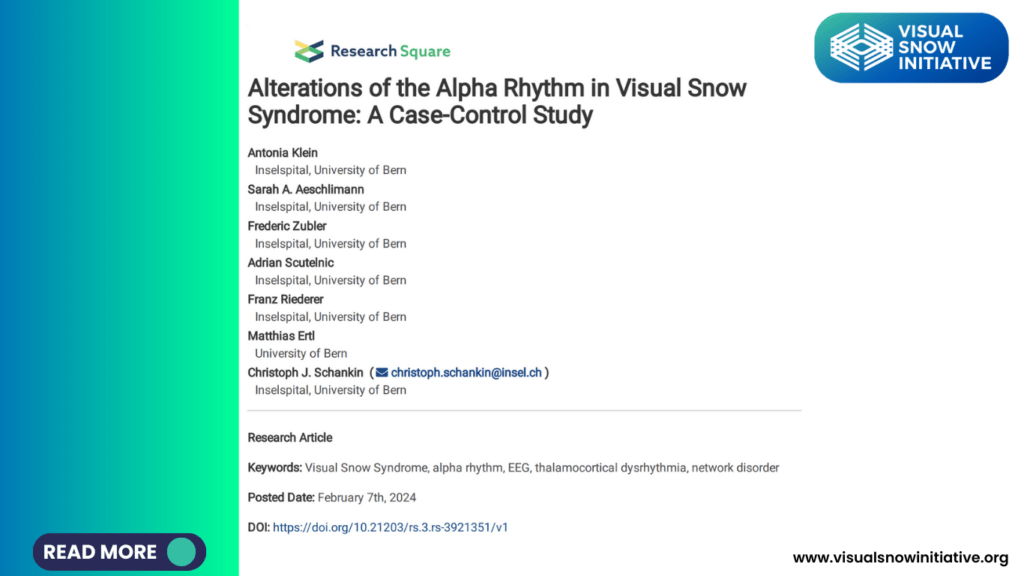Researchers
Antonia Klein, Inselspital, University of Bern, Sarah A. Aeschlimann, Inselspital, University of Bern, Frederic Zubler, Inselspital, University of Bern, Adrian Scutelnic, Inselspital, University of Bern, Franz Riederer, Inselspital, University of Bern, Matthias Ertl, University of Bern, Christoph J. Schankin, Inselspital, University of Bern
Abstract
Visual snow syndrome is a disorder characterized by the combination of typical perceptual
disturbances. The clinical picture suggests an impairment of visual filtering mechanisms and might
involve primary and secondary visual brain areas, as well as higher-order attentional networks. On the
level of cortical oscillations, the alpha rhythm is a prominent EEG pattern that is involved in the
prioritisation of visual information. It can be regarded as a correlate of inhibitory modulation within the
visual network.
Methods: Twenty-one patients with visual snow syndrome were compared to 21 controls matched for
age, sex, and migraine. We analysed the resting-state alpha rhythm by identifying the individual alpha
peak frequency using a fast Fourier transform and then calculating the power spectral density around the
individual alpha peak (+/- 1Hz). We anticipated a reduced power spectral density in the alpha band over
the primary visual cortex in participants with visual snow syndrome.
Results: There were no significant differences in the power spectral density in the alpha band over the
occipital electrodes (O1 and O2), leading to the rejection of our primary hypothesis. However, the power
spectral density in the alpha band was significantly reduced over temporal and parietal electrodes. There
was also a trend towards increased individual alpha peak frequency in the subgroup of participants
without comorbid migraine.
Conclusions: Our main finding was a decreased power spectral density in the alpha band over parietal
and temporal brain regions corresponding to areas of the secondary visual cortex. These findings
complement previous functional and structural imaging data at a electrophysiological level. They
underscore the involvement of higher-order visual brain areas, and potentially reflect a disturbance in
inhibitory top-down modulation. The alpha rhythm alterations might represent a novel target for specific
neuromodulation.


